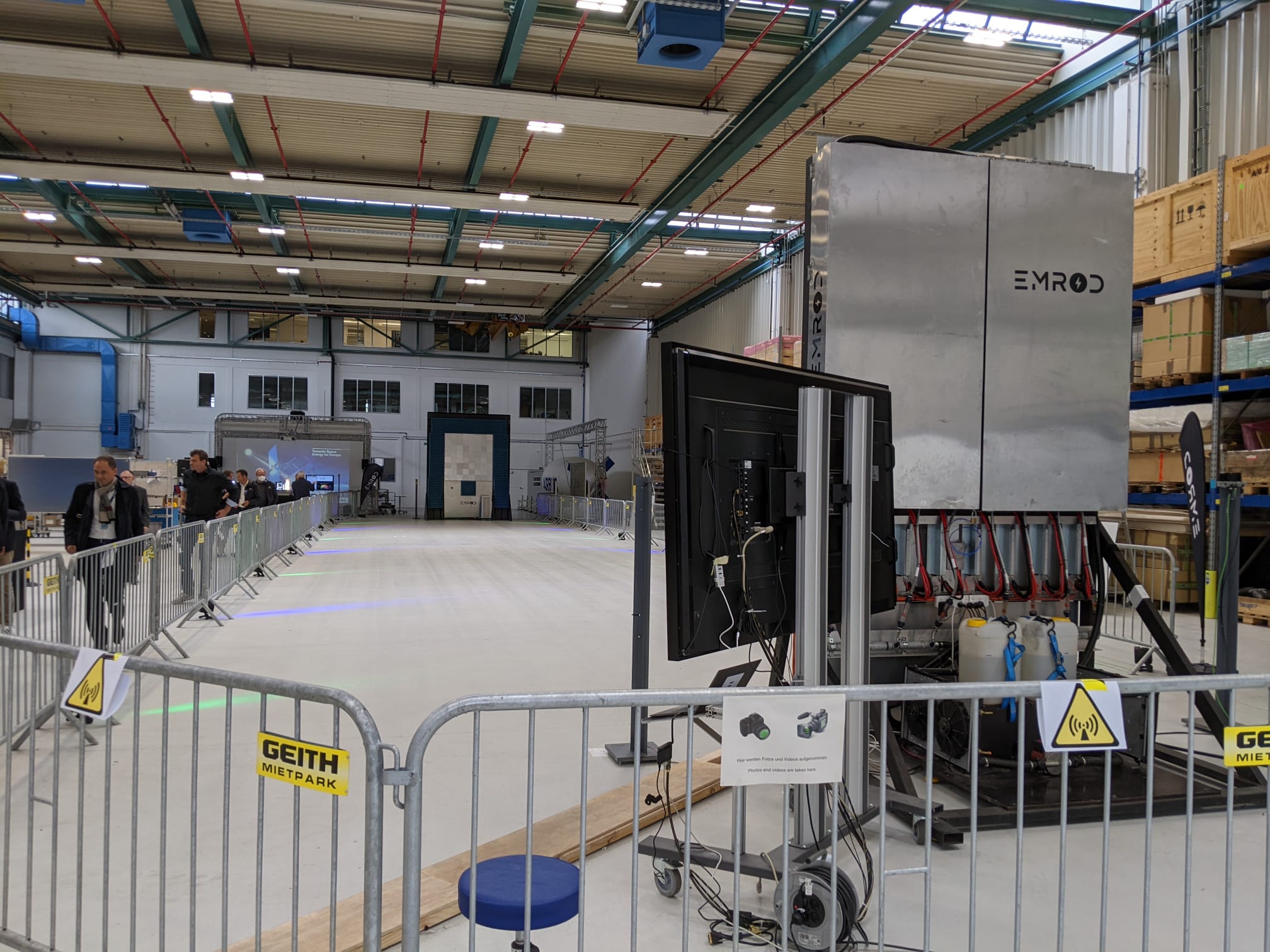In our wireless world, wires are still the best way to move electricity from A to B. Wires are almost always cheaper and easier, at least from a technical perspective, but there are instances where wires may not be an ideal solution.
For lazy people charging their phones — including yours truly — a wireless charging pad is nice to have. For people on remote islands, wireless power could be transformative. Same with space-based solar power, a proposed type of power plant that relies on wireless power transfer to beam energy from orbiting solar panels down to Earth.
Space-based solar power is why the European Space Agency and Airbus have taken an interest in wireless power transfer. Both organizations think that space-based solar power could be the next big thing. Or one of the next big things. Or at least a thing. Which is why the pair teamed up with New Zealand-based startup Emrod to demonstrate a wireless power transfer system in Munich last week.
Wireless power transfer is similar in rough terms to wireless data transfer. There are two antennas, one that sends and another that receives. On the sending end, power is converted to microwaves at 5.8 GHz, the same as high-frequency WiFi. On the receiving end, the rectenna collects and converts the microwaves into direct-current electricity.
The demo saw 550 watts of electricity sent from one end of an Airbus warehouse to another, spanning a distance of 36 meters (128 feet). Over that distance, 95% of the power beamed from the sending antenna made it to the receiving antenna on the other side.

Emrod’s demonstration system beams power across an Airbus warehouse. Image Credits: Emrod
The entire system was only about 36% efficient, though, in part because the demo was focused on beam collection, Natalie Robinson, Emrod’s chief marketing officer, told TechCrunch. The system lost energy in the conversion from direct current to microwaves and then again from microwaves back to direct current. She added that Emrod expects to hit 60% end-to-end efficiency over the next year, and its long-term target is 85% or higher.
The electricity that made it across the warehouse ended up powering an electrolyzer and a beer fridge, among other things. (The beer fridge was apparently a nod to Munich’s Oktoberfest, which ended yesterday.) The team also flew a drone between the two antennas to demonstrate the system’s ability to stop and restart in case of obstruction.
Emrod’s recent demonstration was a marked improvement over its earlier capabilities. Two years ago, the company’s equipment could only bridge a two-meter gap.
The startup, which was founded in 2019, has received an investment from Powerco, a New Zealand utility.
For long-range power transfer, the industry seems to have settled on microwaves. Lasers are another option, though they have obvious drawbacks, including the potential to blind or burn people and animals that might wander into their path. Plus, lasers can be blocked by cloud cover.
Microwaves face limitations, too, since only certain frequencies can transmit through the air without suffering major losses — atmospheric attenuation starts to rise after 2 GHz and becomes a significant issue above 10 GHz. Still, the hurdles haven’t proved insurmountable so far.
Airbus has said it’s interested in space-based solar power as a possible way to power electric aircraft. Rather than carrying all energy required for a flight on board, a hypothetical aircraft might use battery power for takeoff and landing and then rely on power beamed from space. Canadian researchers tested the concept in the 1980s, sending power via microwaves from a ground-based antenna to a small drone. In its last demonstration, the drone flew for an hour on microwave power alone. (The project ended shortly thereafter when a field mouse reportedly nested inside the aircraft and chewed through its balsa wood frame.)
Whether wireless power transfer will help or hinder space-based solar remains to be seen. There’s plenty working against it, from the relative affordability of terrestrial solar to the challenges of beaming energy over hundreds or thousands of kilometers.
It’s possible, though, that wireless power transfer could find another use beaming power over treacherous terrain or choppy waters, providing power to remote outposts or opening up new sites to renewable energy development. Those applications may be a ways off, too, but they’re much more down-to-earth.
